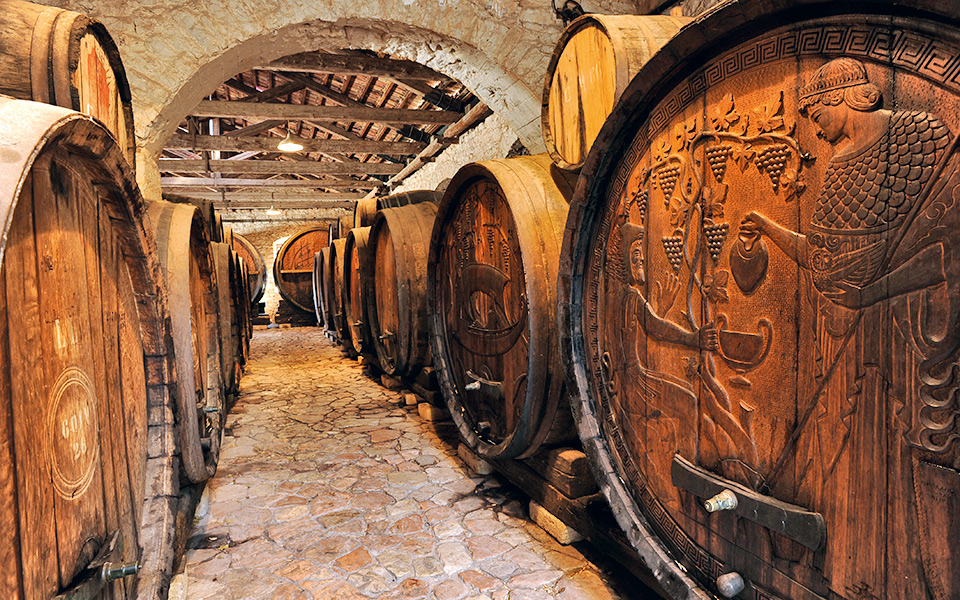AGIORGITIKO
Versatile red
Greece’s best known red variety offers both quantity and quality, fresh easy-to-drink but also complex aged wines, in a wide range of colors, styles and prices. Agiorgitiko is grown mainly in Corinthia, neighboring Nemea but also in other parts of the Peloponnese. Depending on the vinification method, the grape yields lively, aromatic rosés, fresh reds with cherry flavors and smooth textured roundness, as well as spicy, oak-aged, velvety wines. More demanding palates are sure to appreciate the “super Nemeans,” carefully blended and left to mature in a new barrel, resulting in a marvelously full body, high acidity, smooth fruitiness and strong tannins. The complex bouquet is full of sour cherry, sage and thyme, minerals, licorice, violet and smoky sweetness from the new oak. Agiorgitiko is an ideal food wine. Pasta, any type of meat, dishes featuring tomato, olive-oil based ragouts, stews and casseroles pair wonderfully with the classic Nemean, which is also one of only a handful of greek reds which go well with grilled, oil-rich fish.
“ Moschofilero, Greece’s most popular white grape variety, both in and outside the country, brings spring to your glass in the form of white and blanc de gris wines. It can be enjoyed equally as an aperitif and as an outstanding accompaniment to a wide range of appetizers. ”
MOSCHOFILERO
Best-selling White
Greece’s most popular white grape variety, both in and outside the country, brings spring to your glass in the form of white and blanc de gris wines. Its great attraction is the unique, inimitable bouquet of white-fleshed fruit, citrus, rose and exotic lychee. Moschofilero is cultivated in many wine-growing areas of the Peloponnese, but is particularly suited to the cool Arcadian plateau of Mantineia, which is responsible for the slow maturation and one of the latest harvests in the country (usually in early October), factors that endow the variety with exceptional aroma and a certain elegance. It can be enjoyed equally as an aperitif and as an outstanding accompaniment to a wide range of appetizers. Simple green salads, croquettes or small pies, fresh white cheeses, but also pasta with pesto or other light yet lively sauces all pair well with Moschofilero. As do small fried fish, squid and even stuffed cabbage leaves, particularly in their more lemony versions. Late harvest wines serve to enhance exotic dishes, such as shrimps with ginger, while barrel-aged labels are great with fusion preparations of fish or white meat. Any self-respecting oenophile should definitely try the very elegant rosés, but also the intriguing dry sparkling wines, which will provide a more comprehensive and very pleasing Moschofilero experience.
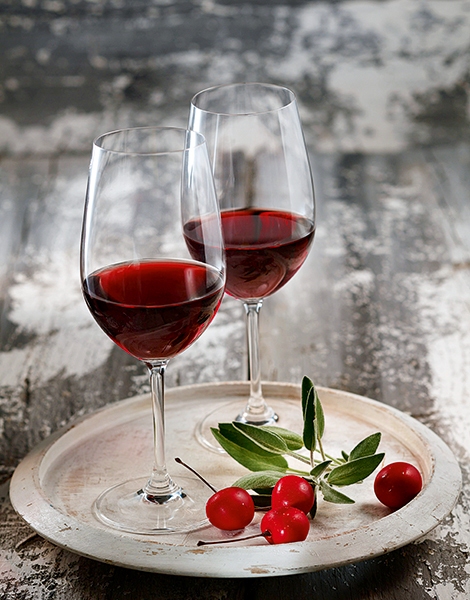
© Petros Andrianopoulos
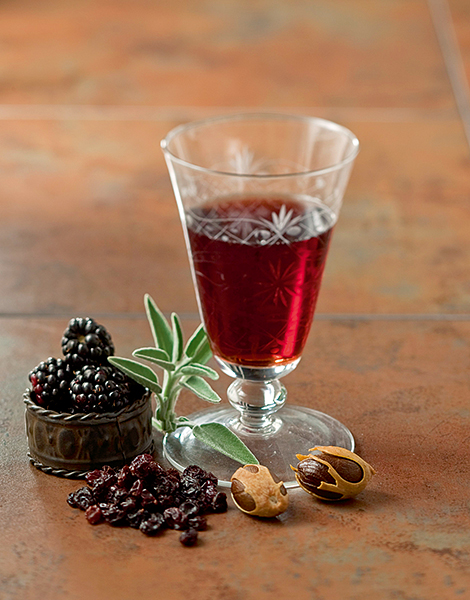
© Petros Andrianopoulos
“ During Ottoman occupation, the Monemvasian vineyards were destroyed. It was centuries before vines were replanted in the wider area and certain persistent producers began the revival of the historic wine, with experimental plantings and exhaustive studies. ”
MALVASIA
Legend revived
The most important chapter in the modern history of Peloponnesian wine begins at what Pausanias called Akra Minoa, present-day Monemvasia. This is where Malvasia is produced, the famed sweet wine so loved by Frankish mariners who arrived at the port to load their vessels with the precious cargo. During Ottoman occupation, the Monemvasian vineyards were destroyed. It was centuries before vines were replanted in the wider area and certain persistent producers began the revival of the historic wine, with experimental plantings and exhaustive studies. The varietal composition of today’s Malvasia is Monemvasia (at least 51 percent), Assyrtiko, Asproudes and Kydonitsa, all indigenous whites. The wines entitled to the PDO status are the sweet whites made from vine-dried grapes. They must remain in barrels (oxidative ageing) for a minimum of two years and then four, or multiples of four, i.e. eight, 12 and so on. The younger wines, boast impressive acidity, a golden color and aromas of fruit, fresh grapes, milky caramel, coffee and honey. The older ones have a darker, orange-brown color and an intensely aromatic nose. They bring to mind grape spoon-sweet, coffee, caramelized peach, with notes of chocolate and coffee, dry blond raisins and tobacco. The aftertaste is exceptionally long.
RODITIS
A discreet companion
Roditis is now the most widely planted white variety in the country. From Achaia to Imathia and from Evia to Thrace, it is easily discernible on account of the characteristic rosé-colored grapes.
The main variety in Achaia, Roditis is most at home in the highland vineyards of Aigialeia, where the cool climate, ideal soil conditions, efforts to counter overproduction, and careful, modern vini- fication, result in exceptional wines that do not benefit from contact with a barrel. In the glass they are thus free to express themselves without frills, offering an en- viable combination of balance, freshness, discreet yet at the same time complex lemony aromas with mineral notes, won- derful acidity and brilliant clarity. Roditis is equally interesting when blended with other varieties, though it shows a clear preference for full-bodied rather than aromatic grapes.
Discreet aromas, high acidity and light body make Roditis the perfect companion for just about half the dishes of Greek cuisine: raw shellfish, fried fish, salads and greens, fried cheese and croquettes, pasta with fresh sauces (e.g. pesto), pies and tarts with cheese or vegetables. When blended, try it with poultry in lemon sauce, grilled fish and delicious stuffed vine leaves, as well as fresh goat’s cheese, for a memorable Roditis dinner.
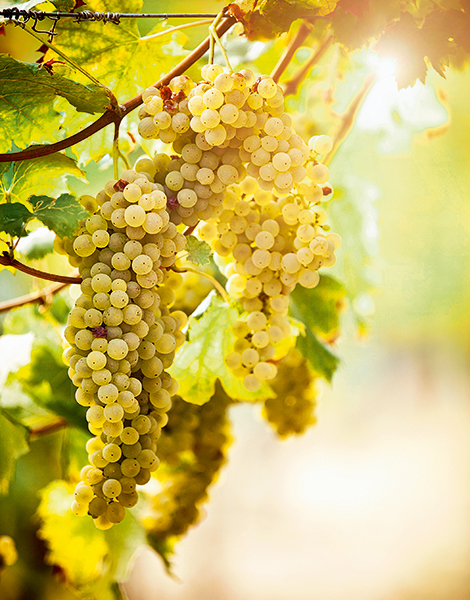
© www.iml.gr
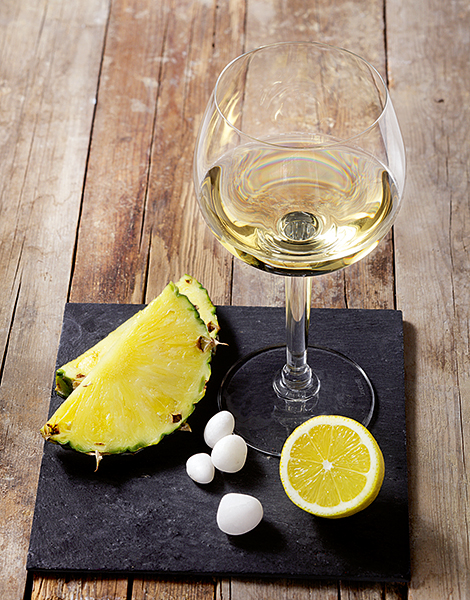
© Petros Andrianopoulos
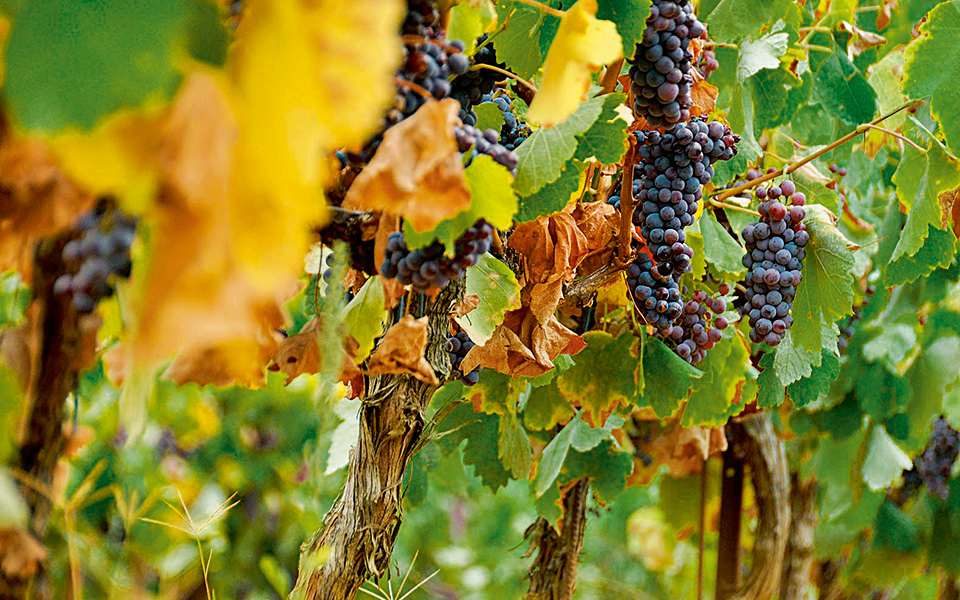
MAVRODAPHNE
Black diva
While there are experimental plantings all over Greece, Mavrodaphne’s heartland is the northwest Peloponnese, especially the area around Patras. A relatively early variety, it is taken directly to vinification tanks and before fermentation is complete, fortified to produce the dessert wine gems many of us savor. An increasing number of winemakers are also growing more confident of their ability to produce not only excellent sweet but also fine dry wines. A good, dry Mavrodaphne is similar to a first-class Syrah, since it is bursting with black fruit flavors and aromatic herbal notes, sage in particular. One sip is enough to appreciate Mavrodaphne’s distinctive strength, unique freshness and vitality, combining fullness of body with relatively low alcohol content.
Though it is often said that good wines pair with anything, you certainly won’t go wrong with a rich meat casserole, a game dish or a heavy recipe with eggplants. But a thick cut of beef from an older animal accompanied by a good bottle will send you to seventh heaven. Desserts with coffee, dried fruits, figs or caramel pair admirably with a quality, sweet Mavrodaphne; the same is true of dry, nutty, blue cheeses such as Stilton. Then again, what could be better than a 20-year-old gem of a label with a spicy Cuban cigar?
“ A good, dry Mavrodaphne is similar to a first-class Syrah, since it is bursting with black fruit flavors and aromatic herbal notes, sage in particular. ”

